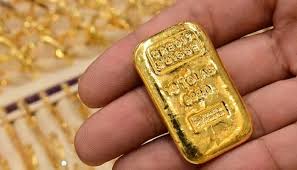Gold has captivated human imagination for millennia. From the glittering treasures of ancient civilizations to its role as a symbol of financial stability in modern τιμη χρυσου 14κ ανα γραμμαριο σημερα, gold has remained a constant in the human story. But what is it about this shiny, yellow metal that has made it so desirable and valuable across time and cultures?
A Historical Foundation of Value
Gold’s journey as a symbol of wealth dates back to ancient Egypt, where it was considered a divine material, fit only for the gods. The famous gold mask of King Tutankhamun is one of the most iconic relics from this period, showcasing the reverence for gold that pervaded Egyptian culture. This fascination wasn’t limited to the pharaohs—gold also represented immortality, with the Egyptians using it in burial artifacts, amulets, and jewelry to ensure a prosperous afterlife.
Fast forward to the rise of the Roman Empire, and gold became more than just a symbol of divine power; it was central to the empire’s economy. Roman coins made of gold were used in trade, and the empire’s conquest of gold-rich territories, like Spain and Africa, contributed to its expansion. Gold became synonymous with political and military dominance. By the Middle Ages, it had found its way into the hands of European monarchs and nobility, further cementing its role as a status symbol.
The Discovery of the Americas and the Gold Rush
Gold’s magnetic pull on human ambition was never more apparent than during the era of exploration and colonialism. The discovery of gold in the Americas, particularly in places like Mexico and Peru, prompted an unprecedented wave of exploration and conquest. The Spanish empire, driven by the quest for gold, sought to expand its territories and fill its coffers with the precious metal. This fueled the European exploration of the New World, with many nations jockeying for control over gold-rich lands.
The 19th century saw the gold rushes in California, Australia, and South Africa, each of which sparked waves of migration and shaped entire economies. The California Gold Rush, for instance, is credited with helping to shape the development of the United States, as thousands flocked to the region in hopes of striking it rich. These gold booms weren’t just about wealth—they were about opportunity, ambition, and the dream of a better life.
The Symbol of Wealth in Modern Times
In modern times, gold continues to be the ultimate symbol of wealth and power. Central banks across the globe hold vast reserves of gold to back their currencies, creating a sense of stability in the global financial system. The gold standard, which linked currencies to specific amounts of gold, was once a cornerstone of international trade until it was abandoned in the 20th century. Even so, gold remains a trusted asset in times of financial instability.
For individuals, owning gold is often seen as a hedge against inflation and economic uncertainty. During times of crisis—whether it’s an economic downturn, geopolitical instability, or even the threat of war—gold prices tend to rise. This makes it a go-to investment for those looking to preserve their wealth.

More Stories
What Types of Injuries Do Queens No-Fault Doctors Treat Most Often?
Difference Between Workers’ Comp Doctors and Regular Physicians in Rego Park
Physiotherapists: The Architects of Movement and Recovery